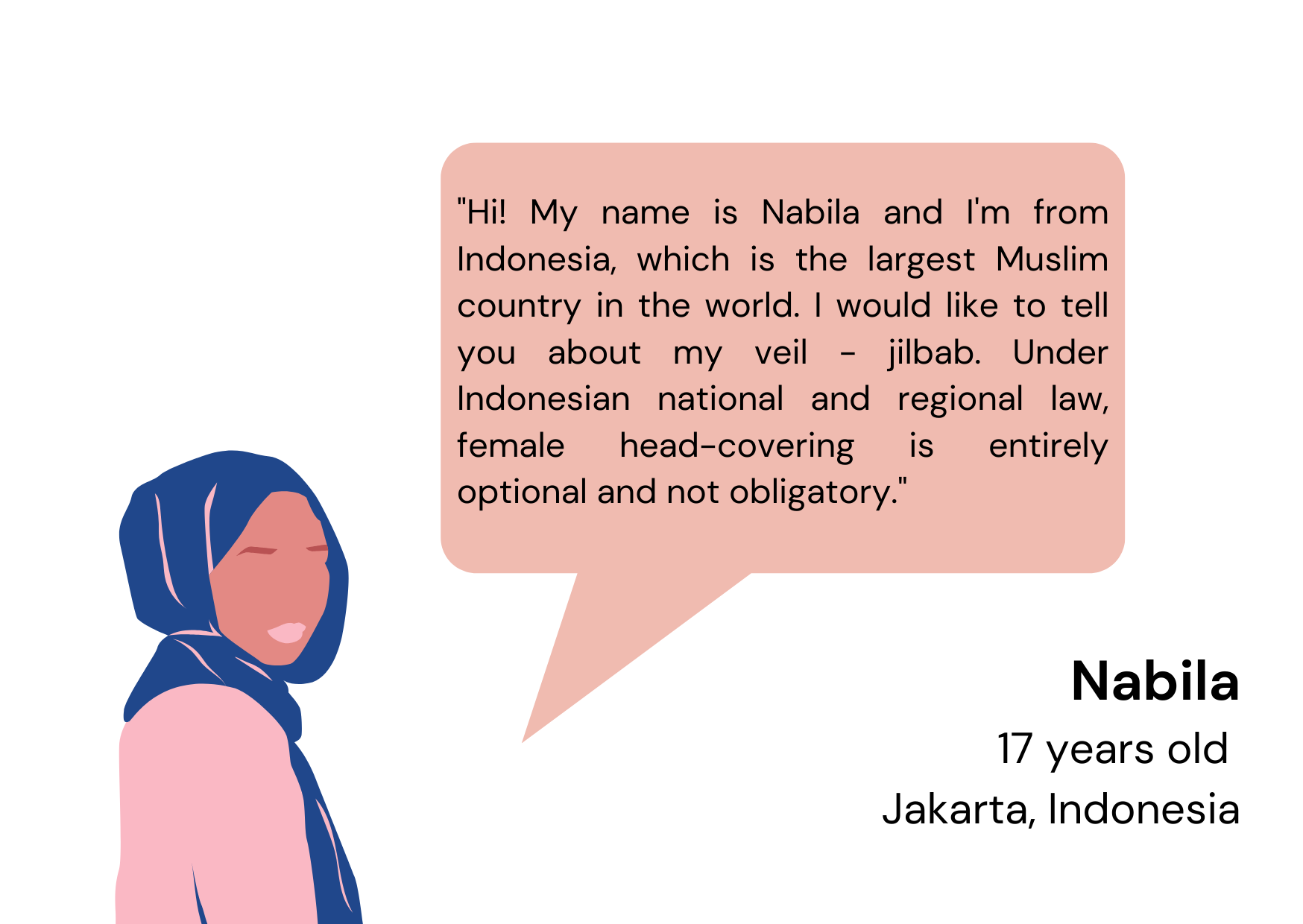
Why the subject of the Muslim veil is very sensitive?
Femininity is not just a biological category but is also linked to socio-cultural factors. It is a matter for the community to recognise this diversity of cultural alternatives and choices and to listen to Muslim women who create and define their own world. Muslim women do not always follow imposed European models; they wish to express their femininity in relation to their own culture. A symptom of the imposition and control of women’s demeanour and attire is the concept of patriarchalism. Patriarchalism is a sociological concept denoting the dominance in family and social relations of the male head of the family. The most important assumptions of social patriarchalism are a) the social privileging of the adult male, who is the head of the family; b) the duty of the head of the family to provide material resources and security for his closest relatives; c) men’s claim to decide on women’s behaviour.[1]
Patriarchal influences and attempts to control women’s lifestyles are a global phenomenon that affects not only women’s attire and demeanour, but also their participation in public life, politics and access to civil rights and political participation. According to the UN Women Analysis (2020) on Women’s leadership and political participation, four countries have 50% or more female deputies parliament in lower houses: Rwanda with 61 %, Cuba with 53%, Bolivia with 53%, and the United Arab Emirates with 50%. Poland ranks in 60th place with women taking 28% of seats, Estonia with 27% is 63rd, the Czech Republic with 23% is 94th while Hungary with barely 13% ranks 153. In 27 countries women account for less than 10% of deputies in lower houses of parliaments, including four lower chambers with no women at all.[2]
Share your reflections with your classmates and the teacher after completing this activity.
Not only Muslim women wear the veil
Before the birth of Islam, the practice of the women’s veil has existed in the Hellenistic-Byzantine period. In ancient Mesopotamia, the women’s veil was a symbol of social status, respect, and marital status. Covering the head or hair was also used to distinguish free women from those who were slaves. The invasions by the Greek and Roman Empires of the Arabian Peninsula and North Africa increased the cultural exchange between various people. The custom of the women’s veil was then introduced into first Judaism and later to Christianity, and gradually it spread to the Arabs. The film below presents the history of the practice of covering hair (by women as well as men) in various faiths throughout the history of civilizations and religions.
Watch the film:Danielle Bainbridge, Why Do So Many Religions Have Headwear?, Origin of Everything (PBS Digital Studios), 20.11.2018
Watch the video and take notes on wearing headwear in different religions. What have you found out? Note the new information.
Next step in our journey
One way to transfer the knowledge to the students about the female headscarf in different religions is through the usage of the metaphor of travelling the world together to explore the diversity of the female headscarf to finally focus on the Muslim veil. The experiences of six international peers (below) will introduce the context of the female veil to students.
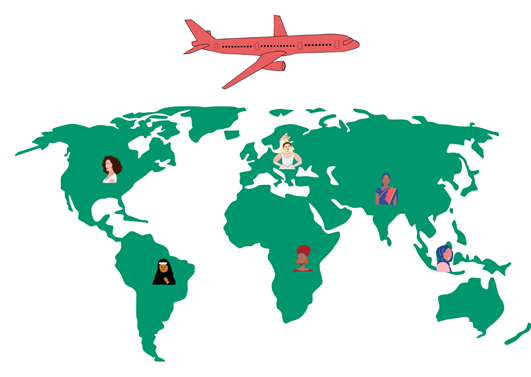
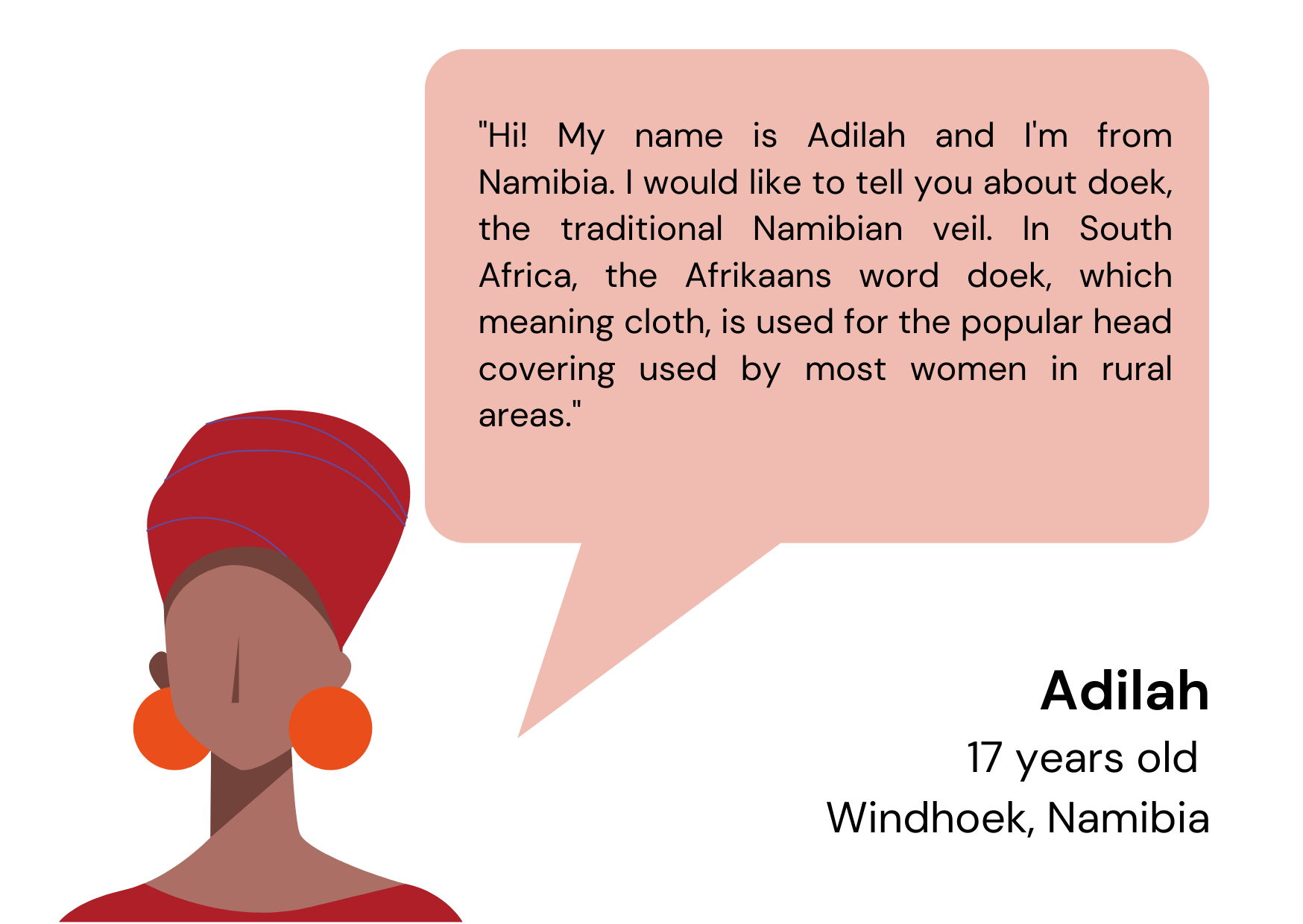
|
Africa – Namibia Different terms are used for headscarves throughout South and West Africa: gele (Nigeria), dhuku (Zimbabwe), duku (Malawi). Women wear duku for special occasions such as funerals and weddings. Women from urban areas wear duku when visiting rural areas to demonstrate respect for custom and culture.[1]
|
|
South Asia – India The word ghoonghat means veil in Sanskrit. In conservative South Asian communities, physical space and gender are connected. In ancient and medieval India, women wore a thin head scarf to beautify their hairstyles and protect them from the wind. The ghoonghatwas then worn for special occasions (weddings). With time, wearing a veil in public places became required for married woman.[1] The practice of ghoonghat refers to the presence in the husband’s family house. Today, it is the practice to wear some form of ghoonghat due to tradition. [1] I. Mathur, From Ghoonghatto De Beauvoir: Finding a Feminist Voice through Ethnography, Journal of Big History, Volume III Number 1, January 2019, p. 171. |
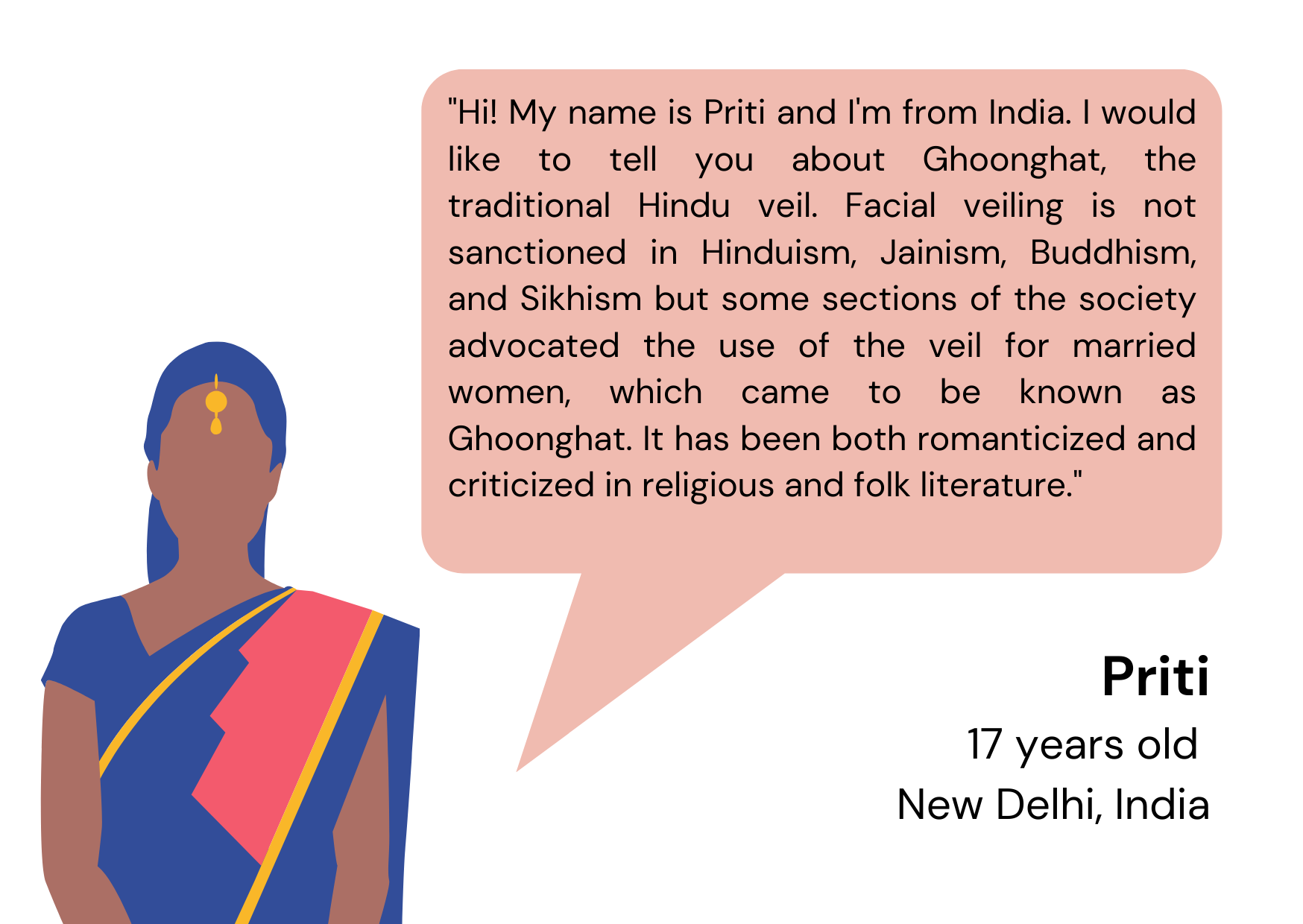
|
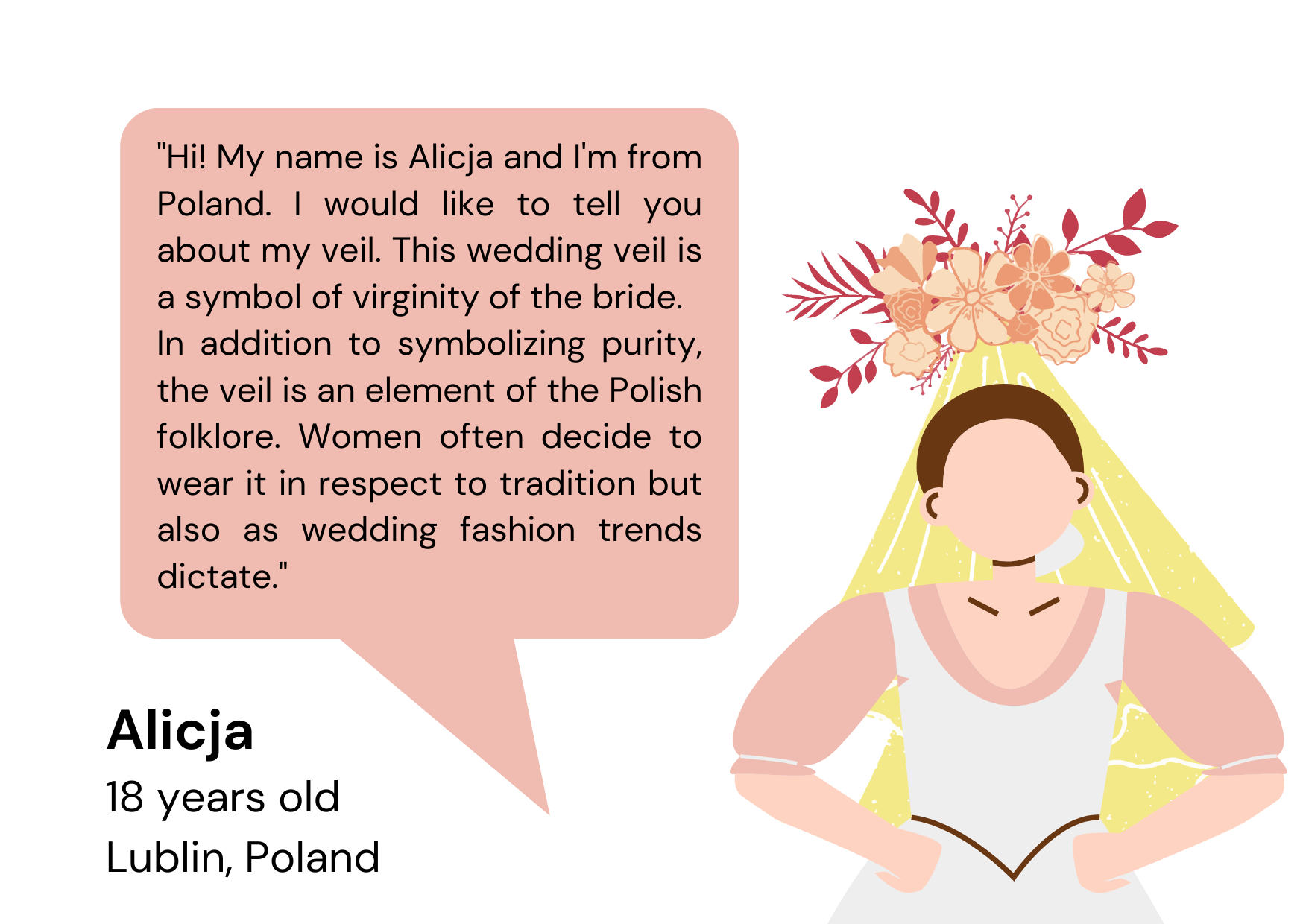
|
Europe – Poland In Poland and the countries of Central and Eastern Europe, headscarves originated from court costumes in the medieval and renaissance periods. With time, they found their place in rural costumes. Under the influence of folk traditions, scarves were substituted by colourful, patterned headscarves. Classic headscarves were made of white linen or tulle. These headscarves were large, covering the head, back and shoulders. The remnant of this tradition is the wedding veil, which symbolizes purity and refers to the Christian religion as well as folklore.
|
|
Latin America – Argentina Wearing the veil as a Christian headscarf refers to religious principles. St Paul in his Letters to the Corinthians wrote: “For if a woman does not have her head veiled, she may as well have her hair cut off. But if it is shameful for a woman to have her hair cut off or her head shaved, then she should wear a veil”. |
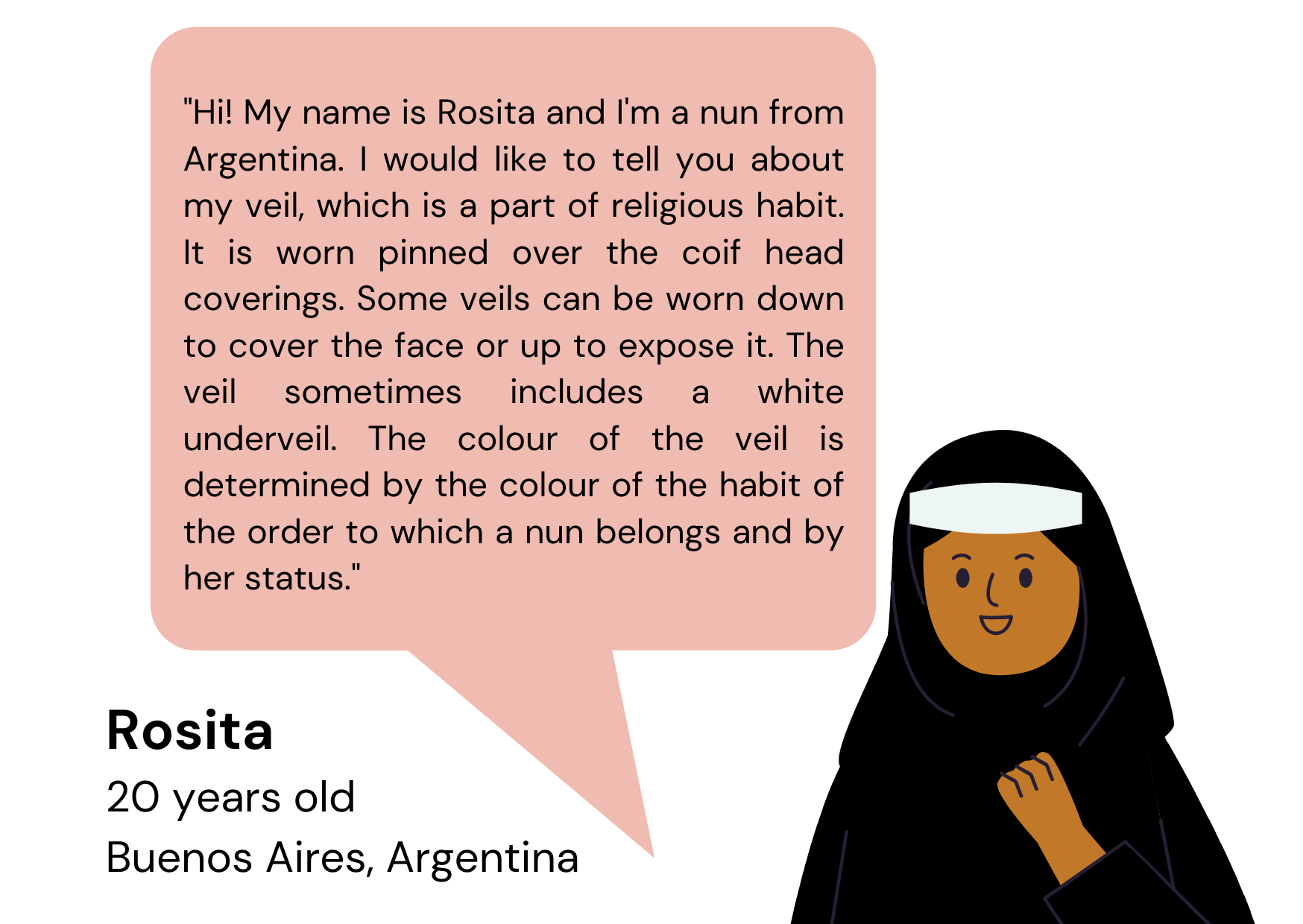
|
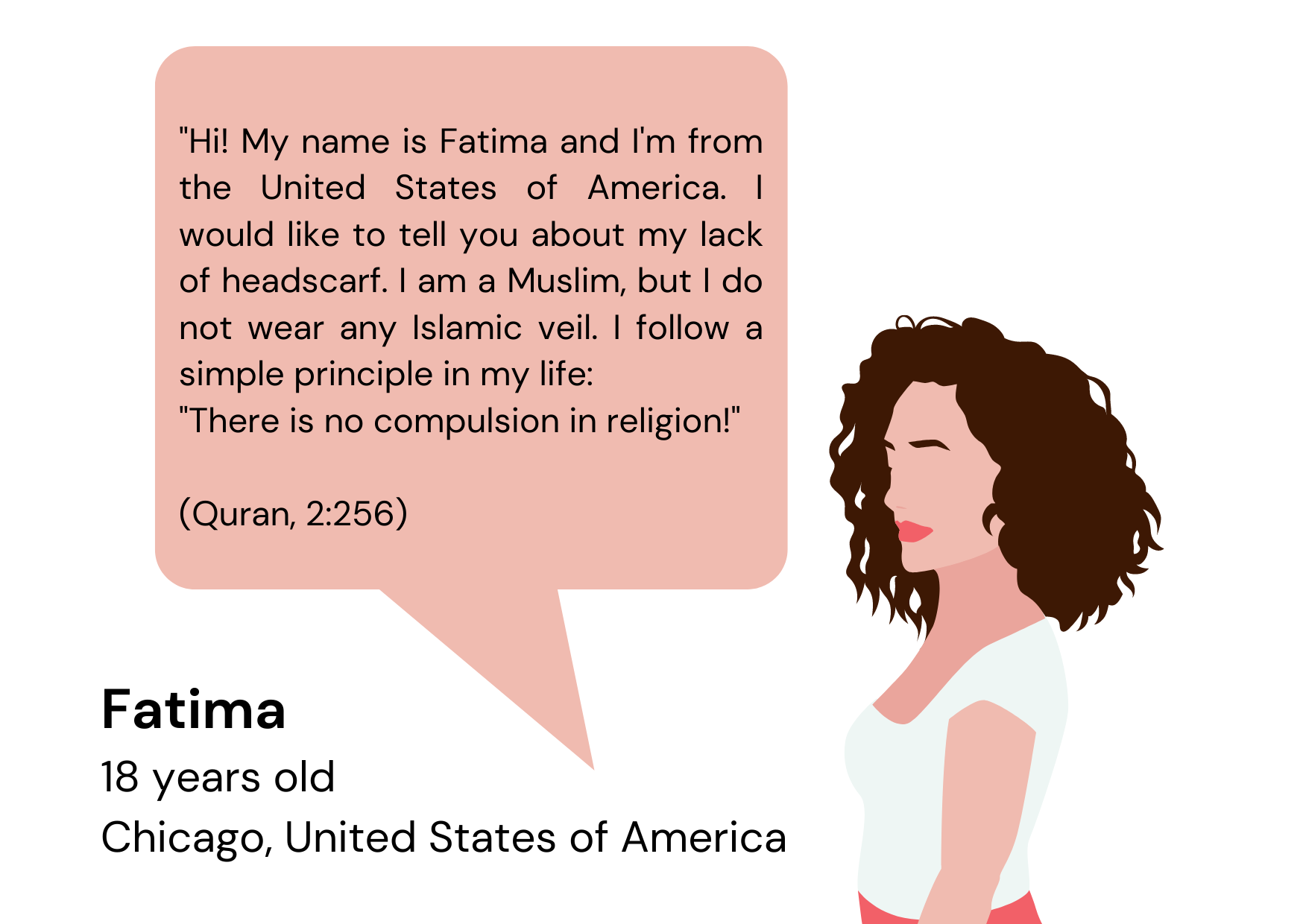
|
North America – USA A Muslim woman who does not wear a hijab is seen as less religious. In many traditional communities she may face ostracism and disapproval. This is a symptom of a lack of acceptance and a hasty judgement of the other person through the perspective of attire. Religiosity does not depend on the degree of body covering in Islam. Wearing the veil is not an indicator of religiosity. |
|
South-East Asia – Indonesia In Indonesia, the term jilbab is used for the Muslim veil. According to Indonesian national and regional law, women’s veil is entirely optional and not compulsory. Women can choose to wear the veil (jilbab or kerudung) during formal and religious occasions. |
|
Analysing the types of Muslim veil, it is necessary to discuss the factors that affect the wearing of the veil.
To what extent is the wearing of the Muslim veil motivated by social pressure (family, community, state)?
Public debates in Europe present the wearing of the Muslim veil as an oppression towards women. The top-down approach assumes that the Muslim patriarchy (male family members) force women to cover their bodies. Moreover, the media and public debate focus too much on the appearance of Muslim women in Europe, while other issues of greater important (such as access to education, health care, labour market) are not debated. As a result, in some countries women are expected and even forced to veil their bodies, while in others governments, institutions or employers have introduced bans on the wearing of hijabs, burqas or niqabs. In recent years, an increasing number of young women have voluntarily adopted the veil, and many Muslim women have actively opposed the introduction and enforcement of laws banning the wearing of veils. It is important to remember that there are many different, complex factors that influence why women put on a veil or adopt a particular style of veiling, and how much choice women have in this regard. Let’s meet three young Muslim women, Ambar, Ilhan and Athena, who provide their personal and very different opinions on what it means to wear the hijab and the status of women in Islam. Watch the film:
Kim Roden, Hijab & Me, True Tube, 7.05.2019
Write down the opinions on the wearing of hijab and the status of women in Islam. What did you already know? What made you interested in these statements?
Types of Muslim veil
There are 4 main terms for the Muslim veil: niqab, burqa, hijab (Arabic terms) and chador (Persian term).
- Hijab is a veil that covers the head and breast. Usually, the hijab consists of one or two headscarves. Hijab means “veil” or “covering” in Arabic. This is the most popular and less restrictive way of covering the head with the face uncovered.
- Chador is a full-length scarf that is fastened around the neck with a hand or pin. It covers the head and body but leaves the face completely visible. Chador means “loose robe” in Persian.
- Niqab covers the face while leaving the eyes uncovered. Niqab means “(face) veil” in Arabic.
- Burqa covers the head except for a small area around the eyes. The so-called full burqa or Afghan burqa is an outfit that covers the entire body, including the eyes, which are covered by a mesh that provides visibility. Burqa means “something that covers” in Arabic.
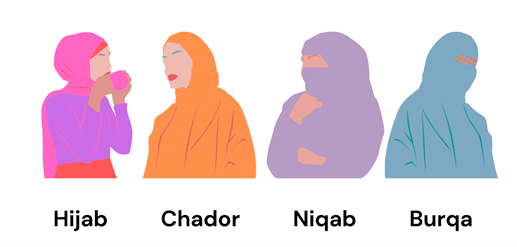
Muslim veil vs Muslim clothing
In this part of the e-module, you will learn more about trends in Muslim fashion. Muslim women’s clothing does not just refer to religiosity, tradition, or the social pressure. Muslim women like to follow fashion trends to look classy and fashionable. In recent years, the fashion industry has catered to Muslim consumers more than ever, as part of the strategy that designers are finally recognizing that Muslim women can be fashionable too. High-end hijabs and abayas made their debut on the Dolce & Gabbana catwalk in 2016.
Watch the film: Muska Jahn, The Dolce & Gabbana Hijab And Abaya Collection
Stylish Muslim women’s clothes have become more popular and easily available with the help of internet influencers who create fashion trends. Fashion trends for specific Muslim celebrations, such as five trends for celebrating Eid 2021, are created on the Muslim internet. Trends created by blogger Ameera Hammouda include silk scarves as a hijab, long dresses, silk scarf as a bandana, classic oversized shirts, and monochromatic looks. In addition to influencer engagement, there are fashion shows organized all over the world. The most popular are Islamic Fashion Festival in Kuala Lumpur, Muslim Fashion Festival Indonesia, and Dubai Modest Fashion Week in Dubai.
The Muslim fashion is accompanied by a rapidly growing sector of traditional Arabic cosmetics, which include hammam ritual, henna, khol as natural eyeliner, argan oils, or sugar scrubs with camel milk. In 2017 Forbes Middle East has compiled a ranking of the Top 10 Arab Beauty Influencers. Ranked first was Muslim woman Huda Kattan, owner of beauty brand Huda Beauty. Huda has a YouTube beauty channel with 4.14 million followers. For more on Huda, see this film “Huda Beauty”.
In the next part, we will look for an answer to the question who is against the Muslim veil? We will also look at the conditioning processes concerning Islamophobia and Hijabophobia in Central and Eastern Europe.
Apart from the positive opinions on the progression of Muslim fashion and lifestyle, negative views of the Muslim veil are also expressed in the public debate. Control of the female body has become a primary matter and a symbol of power for populist politicians. Regardless of culture, political views, or religion, women are expected to fulfil the cultural pattern of beauty, obedience, and modesty.
Could Islamophobia cause murder?
Listen to the story (below) of Dr Suzanne Barakat. This is the story of the Muslims who were murdered by a neighbour in Chapel Hill, North Carolina on February 10, 2015.
Watch the film: Suzanne Barakat, Islamophobia killed my brother. Let’s end the hate, TED, 5.12.2016
For years, populist parties in Europe (mostly Western European countries) have been pushing to implement restrictions on women’s dress. Burqa bans have been implemented by some EU member states. In 2016, Bulgaria introduced a burqa ban with a fine of up to €750. This phenomenon of islamophobia is currently occurring in the Western world and is manifested through the activities of populist parties. Some examples of populist parties with an anti-Muslim narrative in Central and Eastern Europe are Law and Justice (Poland) and Fidesz (Hungary). Leaders of the Law and Justice Party and Fidesz present themselves as unique bearers of a true Europe, who must defend traditional culture, modernisation on their own terms, and sovereignty against the expansion of the decadent West. Islamophobia in Europe has become a hot topic in media around the world. Al Jazeera prepared material about Islamophobic statements of populist politicians from Poland “Islamophobia in Europe: Why won’t Poland take in any Muslims”?
Watch the film:Islamophobia in Europe: Why won’t Poland take in any Muslims?, Al Jazeera English, 8.11.2019.
Conclusions
This e-module aims at providing the teacher with basic knowledge of the Muslim veil and its positioning in the public debate within the CEE countries. An important part of including students in the public debate over the restriction and impact on women’s attire in the world is the process of learning and exploring the issues of the Muslim veil. An important step is to expand knowledge of other regions of the world and other cultures, religions, traditions. At this stage, it is primarily about noticing the similarities and differences of the female veil around the world. The second stage includes learning about values, norms, traditions, and practices that are characteristic for a particular culture, a country and its inhabitants, or a particular social group. During this stage, students acquire intercultural competence, which comes down to achieving the ability to interact with representatives of a different culture in accordance with their own values.
[1]W. Kruczyński, Patriarchat jako źródło przemocy, Instytut Psychologii Zdrowia http://www.psychologia.edu.pl/czytelnia/59-niebieska-linia/767-patriarchat-jako-zrodlo-przemocy.html (1.12.2021).
[2]UN Women, Facts and figures: Women’s leadership and political participation, 15 January 2021, https://www.unwomen.org/en/what-we-do/leadership-and-political-participation/facts-and-figures (accessed 1.12.2021).


